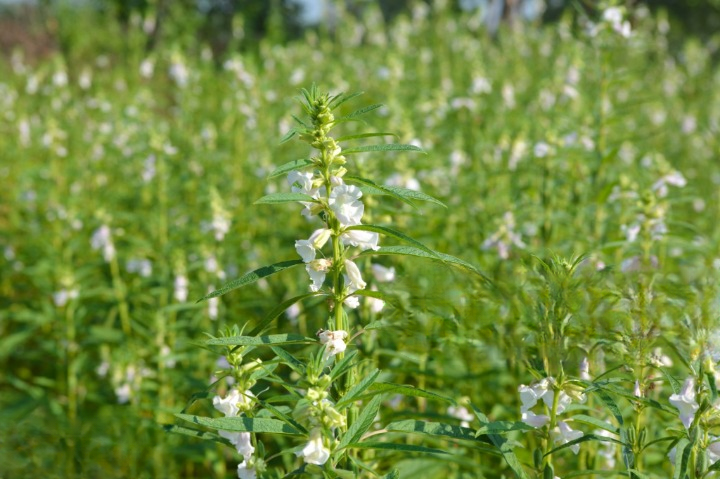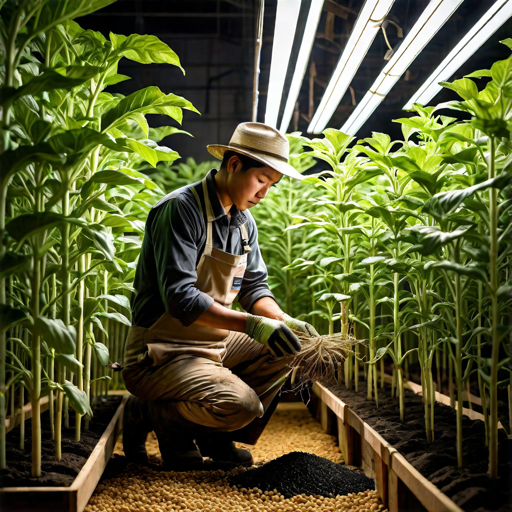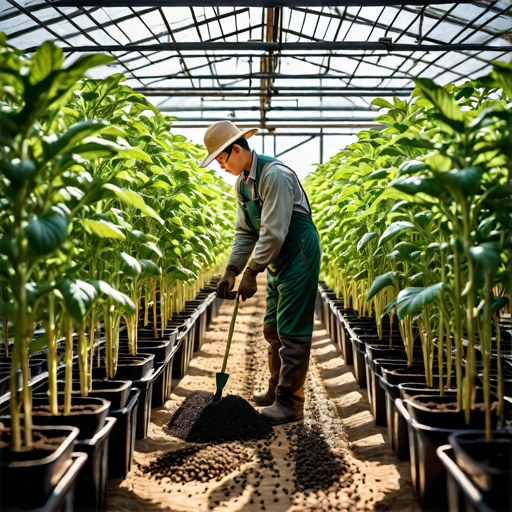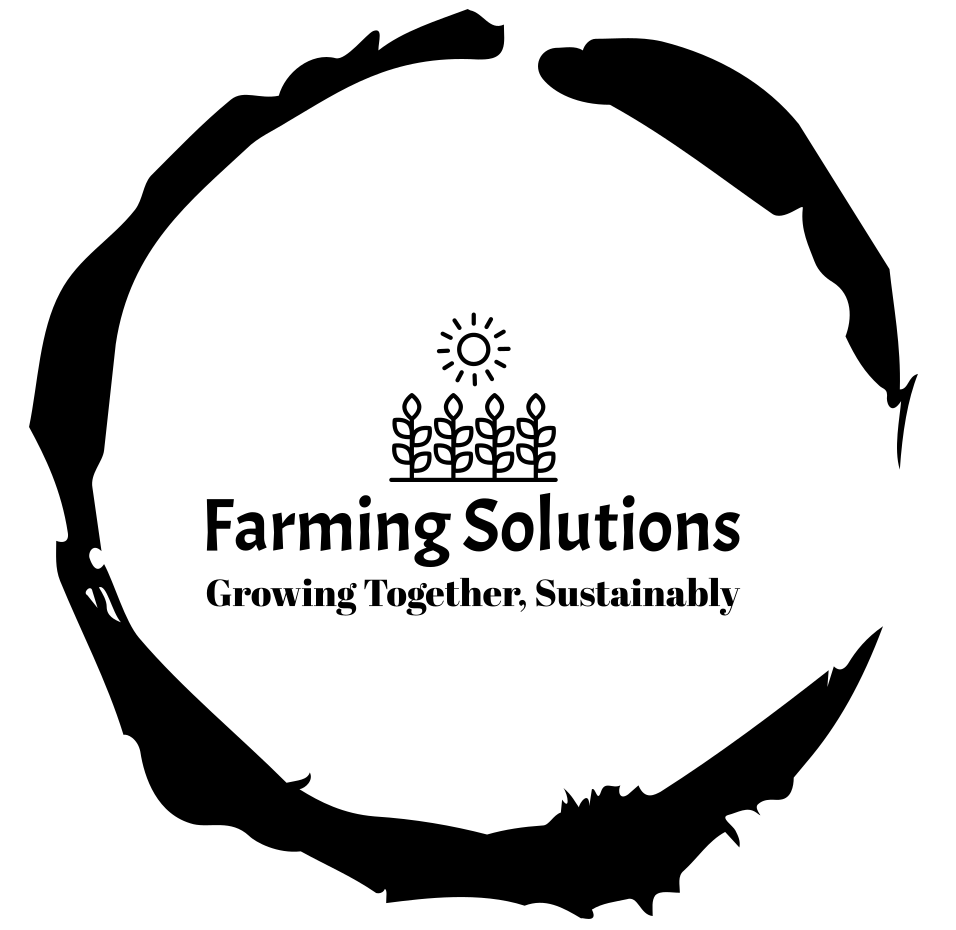
Explore essential tips for optimizing sesame plant growth. Cultivate your sesame plants successfully with proven techniques and practices for a thriving harvest. Cultivating sesame plants can be a rewarding venture, offering not only flavorful seeds but also oil-rich yields. To ensure success in your sesame cultivation, it's crucial to follow proven growth tips and techniques. In this comprehensive guide, we'll delve into the key factors that contribute to the flourishing growth of sesame plants.
Rich Diversity: Immerse yourself in the rich diversity of sesame varieties, each boasting distinctive characteristics and flavors. From the bold and nutty profiles of black sesame seeds to the delicate and subtly sweet notes of white sesame seeds, this culinary journey unfolds a palette of possibilities.
Culinary Versatility: Discover the culinary versatility inherent in each sesame variety. These tiny seeds, packed with flavor and nutrition, not only add a delightful crunch to dishes but also contribute a spectrum of tastes to both sweet and savory creations. From toppings to oils, sesame varieties offer a symphony of options to elevate your gastronomic adventures.
Nutritional Brilliance: Uncover the nutritional brilliance woven into every sesame seed. Packed with essential nutrients, sesame varieties stand as a powerhouse of health benefits, adding both flavor and nourishment to your meals. Whether sprinkled over salads or incorporated into sauces, these seeds bring both taste and wellness to the table.
Global Influence: Let the global influence of sesame varieties captivate your culinary imagination. With origins spanning diverse regions, sesame seeds have left an indelible mark on cuisines worldwide, becoming an integral part of dishes that traverse continents.

Sesame plants come in various types, each with unique characteristics. Whether you're aiming for oil production or culinary uses, understanding the differences in sesame types is essential for successful cultivation.
Golden and Nutty: Explore the allure of golden sesame seeds, coveted for their rich, nutty flavor. Whether sprinkled atop artisanal bread or incorporated into savory dishes, these seeds add a delightful crunch and an earthy undertone to culinary creations.
White Elegance: Delve into the sophistication of white sesame seeds, renowned for their delicate and subtly sweet essence. Elevate both sweet and savory dishes with these tiny yet impactful seeds, adding a touch of elegance to your culinary repertoire.
Black Beauty: Encounter the exotic allure of black sesame seeds, prized not only for their striking appearance but also for their bold, toasty flavor profile. Unleash their potential in both sweet and savory dishes, introducing a depth of taste and visual intrigue to your gastronomic endeavors.
Tahini Marvels: Witness the transformation of sesame seeds into the creamy marvel that is tahini. This versatile sesame paste becomes a culinary canvas, enriching everything from dressings and dips to desserts with its luscious texture and nutty goodness.
Different sesame varieties thrive in specific climates. Evaluate your local climate conditions, including temperature and humidity, to select a variety that aligns with the optimal growth requirements for sesame plants.
Warm Embrace: Sesame seeds, with their origins in tropical regions, thrive in a warm embrace. They revel in temperatures that dance between 70°F to 90°F (21°C to 32°C), where the sun's gentle touch becomes the orchestrator of growth.
Sunlit Affection: Basked in the sunlight, sesame plants demand a generous dose of sunshine. A minimum of 6 to 8 hours of daily sunlight is their elixir, fostering photosynthesis and infusing vitality into the development of those precious seeds.
Water Wisely: While sesame is resilient, it appreciates a mindful balance in watering. A moderate and consistent supply of moisture, coupled with well-drained soil, forms the perfect rhythm for sesame to flourish.
Adaptable Spirit: Sesame exhibits an adaptable spirit, navigating climates from subtropical to tropical with finesse. This versatility opens a realm of possibilities, allowing sesame to leave its mark across diverse landscapes.
As you align sesame cultivation with its climatic confidantes, you step into a realm where weather becomes the maestro, guiding the crop towards a symphony of growth. Whether it's the warm embrace, sunlit affection, wise watering, or adaptable spirit, each climatic note contributes to the enchanting story of sesame cultivation.
Embark on a journey into the world of sesame cultivation, where soil quality and preparation serve as the foundation for a thriving harvest.
Soil Quality: Delve into the intricate nuances of soil quality, recognizing that sesame thrives in well-drained, loamy soils with good fertility. Explore the rich texture and composition of your soil, ensuring it offers the ideal environment for sesame seeds to flourish.
Preparation for Success: Prepare the soil with meticulous care, tilling it to a depth that promotes healthy root development and optimal moisture retention. Amend the soil as needed, enriching it with organic matter to enhance fertility and ensure a nutrient-rich substrate for your sesame plants.
Perfect Environment: Craft a perfect environment for sesame cultivation by ensuring proper soil pH, typically between 6.0 and 7.0, to facilitate nutrient uptake and robust growth. Embrace the art of soil preparation as a vital step in setting the stage for a successful sesame harvest.
In the realm of sesame cultivation, soil quality and preparation are the cornerstones of success. By understanding the unique needs of sesame plants and meticulously preparing the soil, you embark on a journey toward a bountiful harvest, where each seed planted becomes a testament to your dedication and expertise.
Sesame plants prefer well-drained soil with good aeration. Conduct a soil test to assess nutrient levels and pH. Prepare the soil by incorporating organic matter, ensuring an ideal foundation for sesame plant growth.
Planting Time: The allure of sesame cultivation begins with the artful selection of the planting time. Embrace the wisdom of the seasons, choosing the opportune moment to sow the seeds. Whether it's the warmth of spring or the gentle embrace of early summer, aligning your sesame planting with the optimal season sets the stage for a flourishing harvest.
Seed Spacing and Planting Depth: As you take the first steps in this agricultural ballet, carefully choreograph the arrangement of sesame seeds. Space them strategically, allowing each seed the freedom to bask in the sunlight, ensuring unhindered growth. Delve into the soil with precision, planting the seeds at the perfect depth, a delicate balance that nurtures robust germination and sturdy seedlings.
Watering Practices: Like a maestro conducting a symphony, masterful watering practices are the key to cultivating thriving sesame plants. Strike the right cadence, maintaining soil moisture without drowning the delicate roots. Let your watering practices resonate with the needs of the sesame plants, fostering an environment where they can stretch their roots and leaves toward the sun, a dance of hydration and growth.

Essential Nutrients: Explore the key nutrients that orchestrate the symphony of Sesame growth. From nitrogen's role in lush foliage to phosphorus promoting robust root development, and potassium enhancing overall resilience—unveil the secrets to cultivating a thriving Sesame crop.
Soil Enrichment: Delve into the alchemy of soil enrichment, understanding how to tailor the soil composition to Sesame's nutritional needs. Discover the delicate dance of pH levels, the balance of organic matter, and the strategic application of fertilizers, creating a nutrient-rich canvas for Sesame to flourish.
Timing is Everything: Grasp the significance of timing in Sesame Nutrient Management. From the initial stages of planting to the critical growth phases, precision in nutrient application ensures Sesame's continuous vitality. Unlock the secrets of when and how to nourish your crop for optimal yield.
Sustainable Practices: Embrace the ethos of sustainable nutrient management, where judicious use of resources minimizes environmental impact. From cover cropping to crop rotation, learn how mindful practices contribute not only to Sesame's health but also to the overall well-being of the agricultural ecosystem.
Understand the nutrient needs of sesame plants at different growth stages. Implement a fertilization schedule that supports robust plant development while addressing specific nutrient requirements.
Balanced Nutrition: Uncover the secret to sesame success by providing a well-balanced nutritional regimen. Tailor your fertilizer choices to meet the unique needs of sesame plants, ensuring they receive the essential nutrients required for vibrant foliage, robust flowering, and prolific seed production.
Timing is Key: Master the art of timing as you administer fertilizers throughout the sesame growing stages. From the early stages of development to the critical flowering period, strategic applications of nutrients foster a resilient crop, ready to withstand the rigors of nature and reward your efforts with a generous harvest.
Soil Enrichment: Transform your soil into a nutrient-rich haven for sesame plants. Implement fertilization techniques that not only nourish the current crop but contribute to the long-term health of the soil. This symbiotic relationship ensures a sustainable and fertile environment, laying the groundwork for future sesame success.
Precision and Care: Fertilize with precision and care, recognizing the unique needs of sesame plants. Strike the delicate balance between providing ample nutrients and avoiding over-fertilization, ensuring that each application contributes to a harmonious and thriving sesame field.
Pay attention to micronutrients such as zinc and manganese. Addressing micronutrient deficiencies is crucial for preventing yield losses and ensuring the overall health of sesame plants.

Explore organic fertilizer options to promote sustainable sesame cultivation.
Natural Nourishment: Explore the realm of sesame organic fertilizer options, a tapestry woven with natural ingredients that honor the earth. From composted organic matter to well-aged manure, these choices provide your sesame plants with a symphony of nutrients, fostering robust growth while maintaining the integrity of the soil.
Environmental Harmony: Immerse yourself in the ethos of sustainable agriculture as you opt for organic fertilizers that tread lightly on the environment. These choices not only nourish your sesame crop but also contribute to the health and balance of the broader ecosystem, creating a harmonious dance between cultivation and conservation.
Nutrient-Rich Solutions: Delve into the variety of nutrient-rich organic fertilizers, each offering a unique blend of essential elements for your sesame plants. Whether it's the nitrogen boost from legume cover crops or the enriching properties of seaweed-based fertilizers, you have a palette of options to tailor the nutrient profile to your crop's specific needs.
Holistic Growth: Witness the holistic growth of your sesame plants as they thrive under the care of organic fertilizers. Beyond mere sustenance, these options promote soil health, microbial activity, and overall vitality, creating a flourishing ecosystem where your sesame crop can truly flourish.
In the world of sesame organic fertilizer options, you become the steward of a sustainable and vibrant cultivation journey. As you nurture your sesame plants with these eco-friendly choices, you not only invest in a fruitful harvest but also contribute to the enduring health of your soil and the broader agricultural tapestry.
Pest Watch: In the intricate dance of sesame cultivation, keep a watchful eye for potential intruders. Pests such as aphids and whiteflies may seek to disrupt the symphony of growth. Employ organic pest control methods to delicately fend off these invaders, ensuring your sesame plants thrive in a balanced and pest-resistant environment.
Disease Defenders: As stewards of your sesame fields, take preventive measures to shield against potential diseases. Fungal issues may lurk in the shadows, ready to compromise the health of your crop. Foster good air circulation around the plants, avoid overwatering, and maintain a vigilant stance against the challenges that humidity can bring. With these strategies, you fortify your sesame haven against the threats that diseases may pose.
Harmonious Management: Cultivate a harmonious approach to pest and disease management, blending organic interventions with thoughtful agricultural practices. Through this careful orchestration, not only do you protect your sesame crop, but you also nurture an environment where it can flourish with resilience and vitality.
Adopt an integrated approach to pest management by incorporating beneficial insects and natural predators. Minimize the use of chemical interventions to maintain a balanced ecosystem.
Be vigilant against common diseases such as damping-off and leaf spot. Regular monitoring and early intervention are crucial for effective disease management and preserving the yield potential of sesame plants.
Consider companion planting strategies to naturally deter pests. Certain plants, when grown alongside sesame, can act as natural repellents, reducing the risk of pest infestations.
Floral Elegance: Witness the garden transformed into a canvas of floral elegance as Sesame plants burst into delicate blossoms. The air is imbued with the sweet fragrance, and the landscape becomes a tapestry of vibrant blooms, painting a picture of nature's creativity at its finest.
Pollen Dance: As the Sesame flowers unfurl their petals, a balletic exchange begins—a graceful dance of pollination. Bees and other pollinators become nature's choreographers, ensuring the seamless transfer of pollen, a pivotal act that sets the stage for the enchanting transformation from bloom to seed.
Seed Maturation: The magic deepens as the petals fade, giving way to the emergence of seed pods. Each pod becomes a capsule of potential, nurturing the embryonic sesame seeds within. With meticulous care, the seeds mature, evolving into a treasure trove of nutritional richness waiting to be unlocked.
Harvest Symphony: The symphony crescendos at harvest time, where diligent hands gather the mature sesame seeds, reaping the rewards of nature's intricate performance. The once-blooming flowers have woven a narrative of growth, pollination, and seed development—a story that now rests in the palm of your hands.
Understand the flowering period of sesame plants. Adequate sunlight and proper care during this stage contribute to successful pollination and the development of healthy seeds.
Monitor the maturation of sesame seeds by observing changes in color and texture. Harvest at the right time to ensure optimal seed quality and oil content.
Provide necessary care post-flowering, including balanced watering and protection from adverse weather conditions. This stage is crucial for the final development of sesame seeds.

Discover the diverse health benefits packed within Sesame seeds, from essential nutrients to antioxidants, making them a nutritional standout.
Unravel the timeline of Sesame cultivation, from the enchanting flowering stage to the rewarding harvest, and understand the patience required for optimal yield.
Dive into the world of Sesame diversity, exploring various varieties and understanding the unique characteristics that distinguish each.
Explore the intricate dance of pollinators, such as bees, and their crucial role in Sesame seed development, contributing to the cycle of nature's bounty.
Unleash your culinary creativity with ideas on incorporating Sesame seeds into your daily meals, from salads to snacks, for a flavorful and nutritious boost.
Gain insights into creating the perfect environment for Sesame cultivation, including soil conditions, sunlight, and watering requirements.
Explore the possibilities of organic Sesame cultivation and learn about the challenges and rewards of nurturing these seeds without synthetic inputs.
Delve into the potential challenges faced by Sesame crops, from pests like aphids to fungal diseases, and discover effective organic management techniques.
Take a cultural journey as you explore the diverse and time-honored uses of Sesame seeds in various cuisines and traditions around the world.
Learn about the eco-friendly aspects of Sesame cultivation, including its potential to contribute to sustainable farming practices and biodiversity.
Unlock the secrets to keeping Sesame seeds fresh and flavorful with proper storage techniques that maintain their nutritional value.
Explore the art of extracting Sesame oil at home, from choosing the right seeds to the extraction process, for a DIY journey into this versatile culinary oil.
By incorporating these sesame plant growth tips into your cultivation practices, you set the stage for a successful harvest. From selecting the right variety to managing nutrients and addressing pests, each step plays a crucial role in maximizing the yield and quality of your sesame crop. Embrace these guidelines, and watch your sesame plants thrive with abundance.
Note : If you want to know and ask more questions about agriculture, you can contact here

Copyright 2024 Farming Solutions